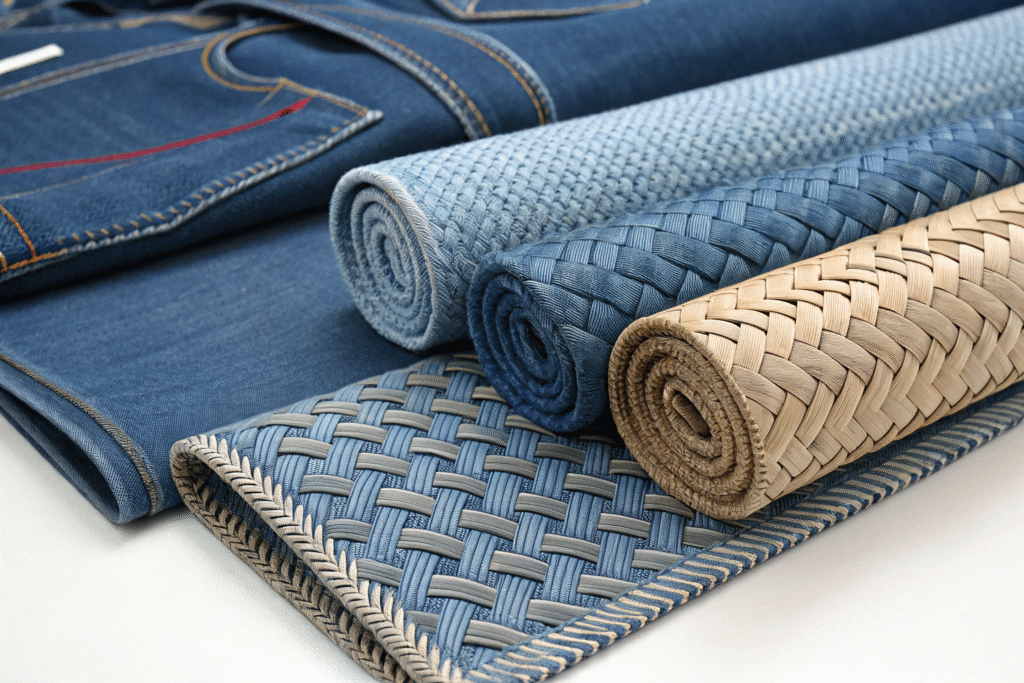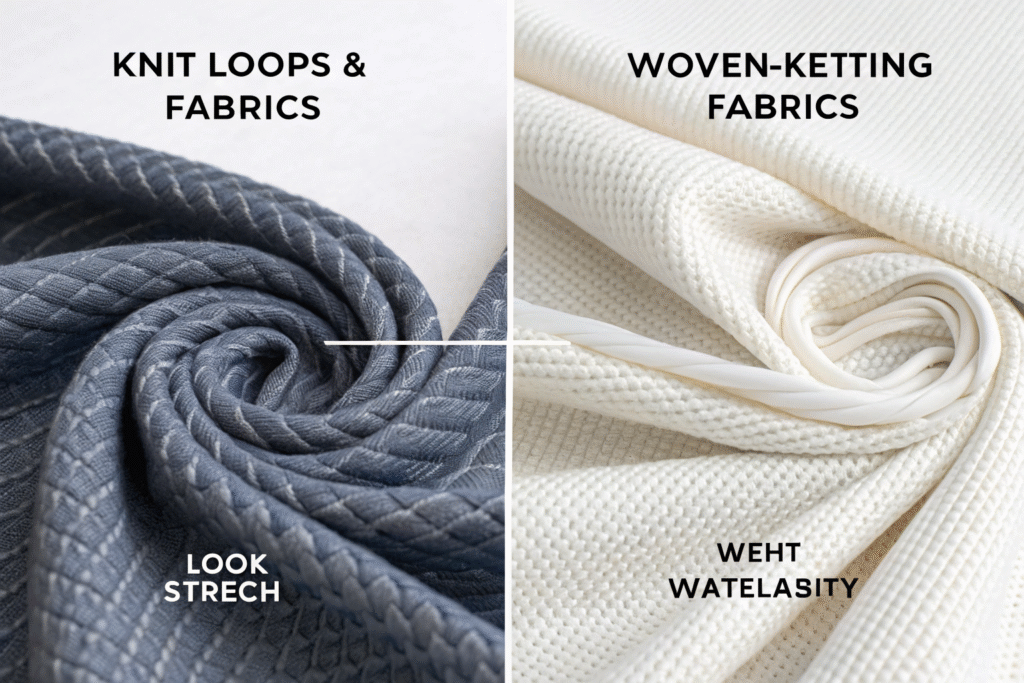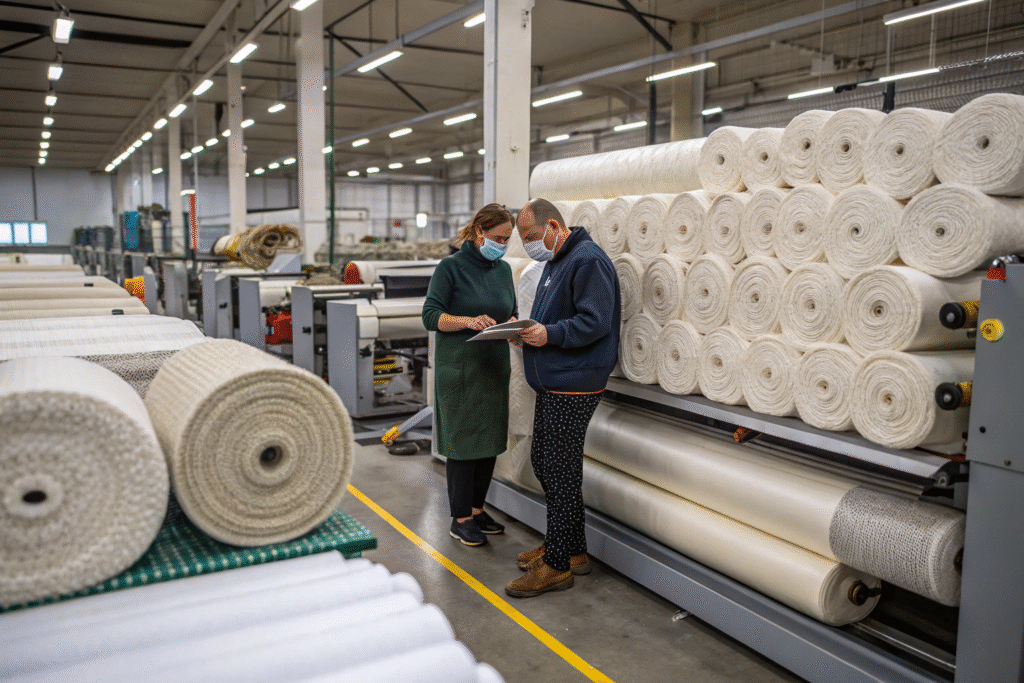Selecting fabrics requires knowledge of both fiber content and fabric structure. Among the most important distinctions in textiles is the difference between knit and woven fabrics. These two categories differ in how they are constructed, how they perform, and where they are applied.
The primary difference is that knit fabrics are made by interlooping yarns, giving them natural stretch and flexibility, while woven fabrics are made by interlacing yarns at right angles, resulting in structure and durability.
This article outlines the characteristics of each fabric type, compares their key features, and explains how to select the appropriate option for different uses.
What is knit fabric?
Knit fabrics are produced through the interlooping of yarns, creating a fabric that is soft, elastic, and lightweight. Industrial knitting machines replicate the same looping action as hand knitting but at a commercial scale. Common varieties include jersey, rib knit, interlock, and tricot.
Knits are valued for their breathability, wrinkle resistance, and ability to stretch, making them widely used in casual and activewear.

Why are knits flexible and comfortable?
Knits stretch in multiple directions without requiring additional elastic fibers. This natural elasticity makes them suitable for sportswear, underwear, and children’s clothing. They also permit better airflow than most woven fabrics. To explore further, see different types of knit fabrics.
When should you use knit fabrics?
Knit fabrics are recommended for T-shirts, yoga apparel, hoodies, and loungewear. Their wrinkle resistance also makes them convenient for travel. Manufacturers use knits to meet the increasing demand for comfort in fashion. Read more about textile applications of knits.
What is woven fabric?
Woven fabrics are constructed by interlacing warp (vertical) and weft (horizontal) yarns at right angles. This process creates a fabric that is strong, structured, and stable. Wovens are categorized into three basic weaves: plain, twill, and satin.
Woven fabrics are durable, structured, and commonly used for formal garments, uniforms, and upholstery.

Why are wovens more durable than knits?
The interlaced structure provides high resistance to wear and maintains shape even with repeated use. This makes wovens suitable for shirts, trousers, denim, jackets, and tailored garments. For more information, see a guide to woven fabrics.
When should you use woven fabrics?
Wovens should be selected for formalwear, outerwear, and applications requiring structure. They are also essential in upholstery and home textiles. For a broader overview, read woven fabric applications.
Key differences between knit and woven
The following table summarizes the distinctions:
| Feature | Knit Fabric | Woven Fabric |
|---|---|---|
| Construction | Interlooped yarns | Interlaced yarns at right angles |
| Stretch | Naturally elastic | Limited unless blended |
| Comfort | Soft, breathable, and flexible | Structured, stable, and firm |
| Wrinkle | Resists wrinkles | Wrinkles more readily |
| Durability | Moderate | High strength and longevity |
| Applications | T-shirts, leggings, sportswear | Shirts, jeans, jackets, upholstery |

Which is more suitable for fashion design?
Knit fabrics excel in comfort-focused fashion, while wovens dominate in structured and formal designs. Many brands use both to diversify collections. See more about knit vs woven comparisons.
How to decide between knit and woven?
The decision depends on intended use. For loungewear and activewear, knits are most effective. For professional and durable garments, wovens are preferable. Some blended textiles integrate elastane to combine both qualities.
Modern applications in the apparel industry
In today’s apparel industry, both knit and woven fabrics are integral. Knits dominate casualwear and sportswear segments due to global demand for comfort. Wovens remain the foundation of denim, tailoring, and home textiles.
Manufacturers increasingly produce blends to combine elasticity with durability, delivering versatile fabrics to consumers worldwide.

Why are blended fabrics gaining popularity?
Blends such as poly-cotton merge comfort and resilience. Luxury fashion often integrates knit elements into woven structures for enhanced performance. Learn more about blended textiles.
How should buyers approach fabric sourcing?
Buyers must evaluate both fiber type and structure when selecting fabrics. Understanding the knit-versus-woven distinction reduces sourcing risks and ensures garment quality. More on textile quality standards.
Conclusion
Knit and woven fabrics represent two foundational categories in textiles. Knits provide elasticity, comfort, and breathability, whereas wovens deliver strength, structure, and durability. Each is essential to apparel manufacturing and is selected according to function and style.
At Shanghai Fumao, we specialize in both knit and woven fabric production. With advanced weaving, knitting, and finishing facilities, along with comprehensive quality control, we support global clients in apparel development. If you wish to create garments with certified, high-performance fabrics, please contact our Business Director Elaine at elaine@fumaoclothing.com. We ensure timely delivery, reliable quality, and international logistics solutions for your business.










